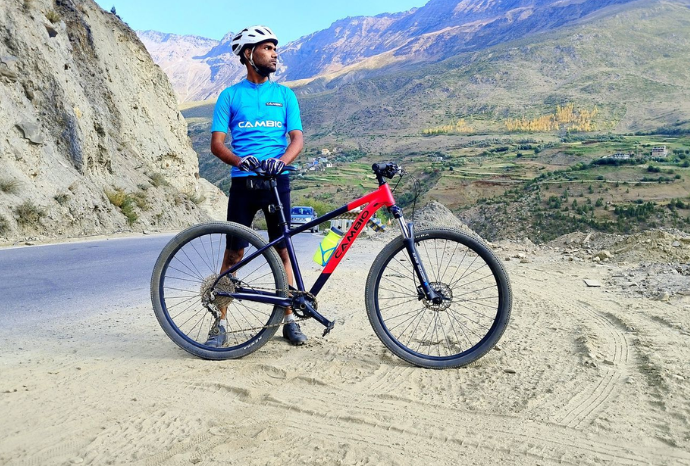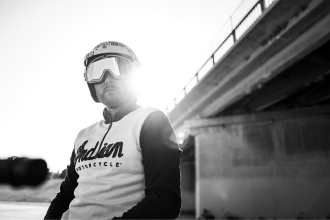One of the best elements of mountain biking is venturing out into the woods, but on the downside, you’ll need to be independent when it comes to caring for yourself and your bike because you’ll likely be farther from help.
Here are our top 20 mountain bike essentials, including both necessary items and practical backups.
While some items, like chain links and derailleur hangers, require cross-compatibility checking, keep in mind that having the equipment you need to aid yourself can also be helpful for others if you ride with friends.
As always, having the kit on hand is only half the battle; you also need to know how to use it to fix a tubeless puncture, administer first aid, or use a shock pump.
1. Repair Kit (Tubeless)
A puncture is one of the most frequent mechanical problems on the trail, whether it’s caused by a stray glass shard, thorn, sharp rock, or a snakebite puncture from dinging the rim.
Having the right tools to quickly fix this can prevent a sticky mess if you run your bike tubeless, as the majority of best mountain bikers do these days.
The best buddy of a best mountain biker, tubeless plugs are easy to apply to a tyre hole with a specialized plug tool to seal the hole and prepare it for reinflation.
2. Replacement Tube
It’s probably time to insert a replacement tube if your tubeless nightmare is beyond saving or if you need to patch a punctured inner tube. Make sure you have an inner tube that fits your wheel size and tyre width.
Although it may seem like a lot, it is highly worth it to bring two extra tubes for long trips because double flats might occur.
Buy Mountain Bikes Online at Best Prices India
3. Patch Kit
These compact kits can be a lifesaver when it comes to reusing a punctured tube and are occasionally even useful for other purposes, including mending a tyre’s interior.
A standard setup with a vulcanizing agent or pre-glued stick-on patches are your options.
4. Tyre Pump
A tyre pump is essential to returning to your tyres’ ideal pressure, whether you’ve “burped” some air out of them or suffered a puncture. Instead of a high-pressure pump, which is ideal for narrower road bike tyres, look for a high-volume alternative for mountain bike tyres. A choice that has a pressure gauge can also be quite helpful.
A CO2 inflator with cartridges is another choice. Although a quick release of pressure may be more effective for seating difficult tyres and tends to take up less space than a pump, these cartridges have a limited lifespan compared to a pump, which may be used again for many years.
5. Multi-tool
The simple multi-tool is a cycling necessity with 101 uses, from tightening the seatpost clamp on a slipping seatpost to attaching cleat bolts, changing bar angles to disengaging chains, securing rattle-inducing bottle cage nuts to unscrewing a thru-axle.
Invest a little more money in a high-quality multi-tool that comes with Allen keys, a built-in chain tool, a T25 torx, flathead, and Phillips screwdriver, as well as other tools. Pliers and wire cutters are also included in some larger multi-tools, which can be useful.
6. Tyre Lever
A reliable tyre lever can make short work of tyre-related problems and is a true necessity when it comes to dragging difficult tyres off of wheels and back on.
A few cool tyre levers are incorporated into other equipment, like chain pliers.
7. Shock Pump
A shock pump can help you fine-tune your suspension as you ride, even though you probably won’t pack one if you’re going on a short loop from home or a trail center ride.
8. Chain Lube
Packing a small bottle of chain lubricant for mid-ride reapplication may help you avoid the audible anguish of a squeaking chain if there are any river crossings or potential downpours on the itinerary. To keep everything operating smoothly—and quietly—on multi-day journeys, this is especially useful.
9. Sun Screen
In addition to kneepads and first aid training, wearing sunscreen with an SPF of at least 30 is essential for trail safety. Reapplying sunscreen as needed during your ride will prevent long-term damage from UV ray exposure.
10. Smartphone
There are some excellent navigation and ride-recording apps available, as well as tools that can be quite useful in an emergency.
You may identify a meeting location or correctly share your location with emergency responders with the what3words app.
It’s a smart idea, especially if you’re going to a place where phone connection may be spotty, to download your route for offline use from some navigation apps.
Make sure your phone is charged before you leave, or if it has a tendency to lose energy quickly, think about bringing a rechargeable battery pack. A phone that is out of battery won’t be much assistance.
11. Waterproof jacket
Having a few additional clothing pieces stowed is a wonderful idea because weather conditions can suddenly and unexpectedly change, particularly when you travel into the mountains.
In addition to a neck tube and extra gloves, a lightweight, packable waterproof jacket is a need for keeping warm when the weather gets chilly.
12. First Aid Kit
It’s usually a good idea to bring a first aid kit when traveling to more distant regions, and it’s even better if you’ve received special training on how to use it.
If you’re traveling far from civilization, be careful to bring an emergency blanket and/or shelter because bad weather can quickly turn seemingly small injuries into dangerous circumstances.
13. Derailleur Hanger
Every rider should have a spare derailleur hanger in their arsenal because they are frequently unique to your chosen bike. To ensure you’re always prepared, it’s a good idea to purchase one when you buy your best mountain cycle in India.
When you crash or your bike falls onto the drive side, the derailleur hanger is a sacrificial part meant to bend or break, minimizing damage to the far more intricate and pricey rear derailleur.
Looking down the line of your powertrain or detecting the skipping gears caused by misalignment will quickly reveal whether you have bent a hanger.
14. Master-link
Action really shouldn’t stop as a result of a broken link. For a modest fee, you can purchase a quick-link or master-link that will enable you to repair your chain at the trail’s edge.
15. Batteries
Of course, it makes sense to start your bike trip with a full charge, but it’s not always that simple to remember.
To avoid an unexpected switch to a single speed setup midway through your ride, it is also worth taking a spare battery for your SRAM AXS and a charging cord for your Di2.
If you anticipate the need for a recharge and there are options for charging along the way, it’s a good idea to pack your e-bike battery charger.
16. Zip ties
One of those magical solutions for so many tricky situations is the use of cable ties or zip ties. The possibilities for (temporary) trailside repairs are endless. They can be as simple as strapping up a broken zip, holding bust shifters in place, or securing a shoe with a broken buckle.
Always carry a few cable ties, and keep in mind that you can reuse them by depressing the mechanism’s lever to release the end.
17. Water and Snacks
You’ll need to make a strategy for how you’ll refuel with snacks and water to keep you going for longer trips.
You may have packed a couple rounds of sandwiches or your favorite bars, or you may have looked up your route in advance to find cafes or gas stations.
Carrying more snacks than you anticipate needing is a good idea, just in case. Nobody should be agitated when attempting to fix a broken bike or find their way out of a bog in the fog.
18. Cash
A little cash stashed in your toolbox or on your bike can occasionally come in very handy. In a world where contactless digital payments have become the norm, there are still many businesses in the country that only accept cash or unanticipated trailside honesty boxes where you’ll need some cash.
19. Emergency Lights
Having a set of portable, powerful emergency mountain bike lights might mean the difference between making it home without an accident and getting lost on any given stretch of road.
20. Backpack
You’ll need a place to store all of these necessary tools and spare parts. Choose whether to attach them to your bike or to yourself as the rider, and keep in mind that if you’re carrying a sizable amount of extra weight, you might need to adjust your suspension setup.
Conclusion
There are times when you ride your bicycle mountain bike and occasions where you spend the entire day hiking. For the former, a pocketful of snacks, an air can, and a full water bottle will largely be plenty, but the epic journey calls for much more.
Most repairs and minor injuries can be handled with a well-stocked backpack, and it will make your adventure so much more enjoyable.
Our helpful list might help you get started if you’re not sure where to start. We’re opening up our backpack to show you some of the top accessories for a day of mountain bike riding.







